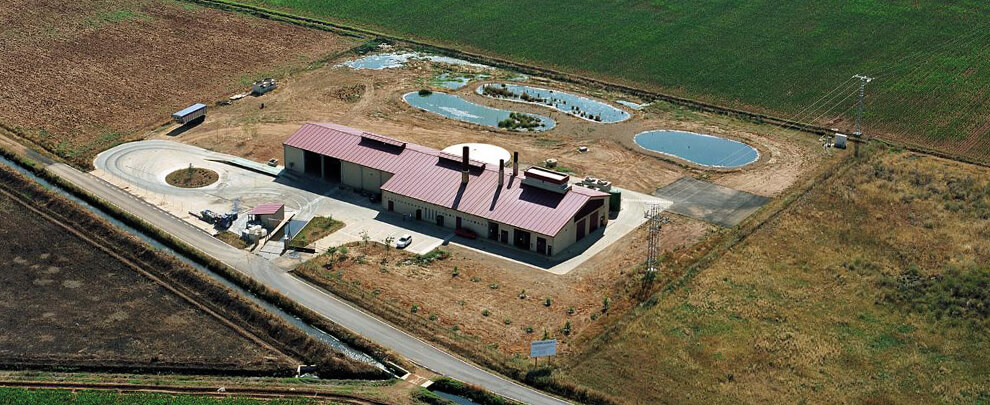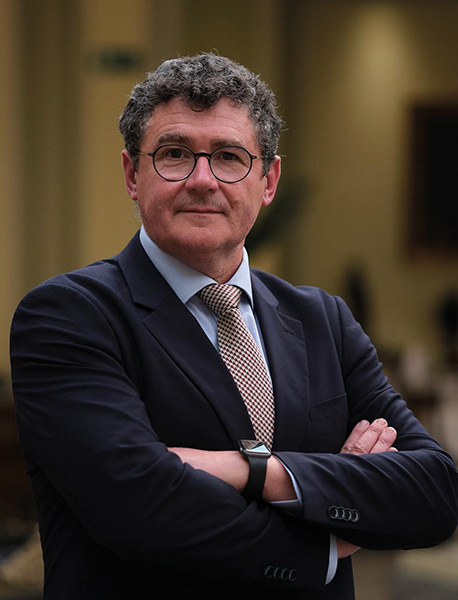Blog
Blog

The closure of cogeneration plants threatens rural sustainability
01st October 2025 - News
Sustainability is one of the swine sector's significant challenges. However, it could be destabilised by the end of the valuable life of Spain's 24 slurry cogeneration plants. In December 2024, two plants in Catalonia shut down, and all facilities are set to close progressively in the coming years. The sector sees ongoing operation as vital to ensuring sustainability, particularly in rural areas. In this context, the Association for the Environmental De-impact of Slurry (ADAP) established an Observatory to identify practical and sustainable solutions for slurry treatment. We spoke with Josep Capdevila, ADAP's president, about the current status of slurry plants and the alternatives under review.

Josep Capdevila, president of ADAP. Photo: Josep Capdevila.
As of today, what is the outlook for the continued operation of slurry plants in Spain?
It is very concerning. Two plants in Catalonia, one in Alcarràs (Lleida) and one near Vic (Barcelona), have already closed this year, and there is, for now, no agreement to allow them to keep working. If nothing changes, all of Spain's slurry plants will close in the coming years.
What does the closure of these plants mean for the affected regions?
The swine industry is vital to Spain's economy, especially in rural areas where most farms are located. Our biggest fear is that the balance built over the years, between growing slurry generation, agricultural land application, and treatment, could be broken. If that balance is lost, the damage to the sector could be irreparable, potentially forcing farms in vulnerable areas to close.
Why has the Government refused to extend the useful life of these facilities?
All cogeneration plants in Spain receive operational remuneration to compensate for their positive contributions to the national energy system, which is more efficient with cogeneration than with conventional generation. However, current energy policy does not contemplate residue‑treatment plants with associated cogeneration, leaving them without a pathway once their regulatory lifespan ends. From ADAP's perspective, this is a mistake. We do not understand why the agri‑food, paper, or chemical industries can use cogeneration for their processes while the swine or olive sectors cannot use it for waste treatment.
In the midst of this problem, the Observatory for the Treatment of Swine Slurry was created. How did it come about?
Following the recent energy crisis, confusion arose around slurry plants and biogas (biomethane) projects. Biomethane will be a key player in national energy policy. However, it faces challenges that can slow development, including public acceptance, permitting, access to feedstock, gas connections, and digestate management (particularly in terms of nitrogen content). Even so, synergies between our treatment plants and future biomethane facilities enable combined energy and fertiliser valorisation of slurry while avoiding atmospheric emissions and potential nitrogen pollution of groundwater. That changing and somewhat confusing scenario led us to create the Observatory.
Who is part of it?
A broad, cross‑cutting Observatory must make room for analysis, reflection, and debate among professionals from the sectors involved, people who can contribute their expertise while monitoring the situation. As ADAP, we took the first step and have brought in companies, as well as technology centres and universities. Examples include Price Waterhouse Coopers, which is working, above all, on economic analysis of possible slurry-treatment alternatives; AINIA, a Valencian technology centre with extensive experience in biomethane; and experts from AFI Internacional, with expertise in the swine sector.
What is the Observatory's objective?
Our goal is clear: to advance sustainable slurry management. First, we must distinguish non‑vulnerable, non‑surplus areas, where the most viable option remains agricultural valorisation, using slurry as fertiliser applied directly to fields according to crop needs, from vulnerable, surplus areas, where treatment plants are necessary. Precisely in these areas, we believe that biomethane plants should be developed and promoted, taking the pros and cons of each project into account. We clearly see one of the most viable options for extending the life of slurry cogeneration plants: adding new biomethane plants and creating synergies between the two facilities. ADAP already has five plants doing this today, energetically valorising biomethane.
How long would it take to develop these projects?
Applying for and getting the permissions is a significant bottleneck. Realistically, solutions take at least four to five years to implement. That is why we are asking for a 10–15‑year extension for existing slurry plants, to allow investment in upgrades, efficiency, and the development of the new projects needed to keep the swine sector stable.
Is there a space for dialogue with the Administration to make these proposals possible?
Current legislation does not allow slurry plants to operate once their regulatory lifespan ends, he project is essentially closed. We are, however, in contact with several political parties and are cautiously optimistic. We hope to escalate the discussion with the Ministry for Ecological Transition and the Digital Agenda, and with the Ministry of Agriculture.
What are the consequences if a solution is not found in the short to medium term?
In highly susceptible areas, there is no alternative to slurry plants. Take the Vic plain: one facility has closed, and slurry must now be hauled over 150 km for treatment. We do not consider that feasible. The sector must back sustainable solutions, and imminent plant closures without alternatives are not one of them. Tensions may rise in rural areas. If the current balance between treatment and agricultural valorisation breaks, contamination is clearly not an option, but if a farmer has no solution to manage slurry, they may have to shut down their operation. The loss of slurry plants could force small farmers to close their farms.
What is your next step toward a viable solution?
We are working on all the points we have discussed and engaging with the sector and professionals. We are meeting with regional governments and have requested meetings with the Ministries of Agriculture, Ecological Transition, and Digital Agenda. We want to show them the positive impact of our treatment facilities and of proper slurry management on rural areas.








